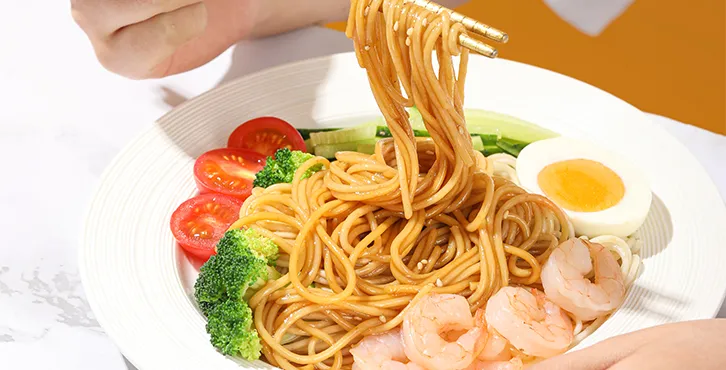japanese noodle made from buckwheat
The Delight of Japanese Buckwheat Noodles Soba
Japanese cuisine is renowned for its unique flavors, artistry, and regional specialties
. Among its many offerings, one dish stands out for its healthy, nutty taste and versatility soba noodles, a type of noodle made from buckwheat. Soba has deep cultural roots in Japan, and it is celebrated for both its nutritional benefits and its role in traditional Japanese dining.The Origin of Soba
Soba noodles trace their origins back to the Edo period (1603-1868), particularly in the Nagano region, where buckwheat was cultivated due to the area's cool climate and poor soil conditions, which made it difficult to grow other grains. Buckwheat itself is not a grain but a seed, making it gluten-free and a suitable option for those with gluten sensitivities. The name soba refers to buckwheat in Japanese, and over the years, soba has evolved into a beloved staple in Japanese households and restaurants alike.
Nutritional Benefits
One of the most appealing aspects of soba noodles is their impressive nutritional profile. Buckwheat is a powerhouse of nutrients, rich in protein, fiber, vitamins, and minerals. It contains essential amino acids, including lysine, which is often lacking in other grains. Additionally, buckwheat is high in antioxidants and has been associated with various health benefits, such as better heart health, improved digestion, and lower cholesterol levels.
Soba noodles are low in calories and fat-free, making them a great option for weight management. They also have a low glycemic index, meaning they release energy slowly and help maintain steady blood sugar levels. These characteristics make soba an excellent choice for anyone looking to incorporate healthier eating habits into their lifestyle.
Culinary Versatility
japanese noodle made from buckwheat

Soba noodles are incredibly versatile and can be enjoyed in numerous ways. Traditionally, they can be served cold with a dipping sauce known as tuzuyu, which is a mix of soy sauce, mirin, and dashi. This method, called zaru soba, presents the noodles alongside a garnish of chopped green onions and wasabi, allowing the natural flavor of the buckwheat to shine through.
Alternatively, soba can be served hot in a broth with various toppings. The warming dish, known as kake soba, typically includes ingredients like sliced scallions, tempura, and even a soft-boiled egg. In addition, soba can be used in salads and stir-fries, demonstrating its adaptability to various cuisines and flavor profiles.
Cultural Significance
Soba is not just a dish; it is deeply embedded in Japanese culture, signifying prosperity and longevity. It is customary to eat soba on New Year’s Eve as a way to bid farewell to the old year and welcome in the new one, symbolizing the shedding of past troubles. This ritual is known as Toshikoshi soba, where families gather to enjoy the noodles while reflecting on the year gone by.
On a broader scale, soba also represents the artisanal food culture of Japan. Crafting authentic soba noodles is an art form, with specialized soba masters dedicating years to perfecting their technique. The process involves grinding buckwheat groats, mixing the flour with water, and kneading the dough before rolling and cutting it into thin strands. This craftsmanship ensures that each bowl of soba is not just a meal but a labor of love.
Conclusion
Soba noodles, made from buckwheat, offer a delightful combination of health benefits, culinary versatility, and cultural significance. Whether enjoyed in a simple cold dish or a complex hot soup, soba reflects the essence of Japanese cuisine – a harmonious blend of quality ingredients, tradition, and artistry. As more people around the world discover the joys of soba, it continues to gain popularity, promising a bright future for this cherished noodle.
-
Unleash Your Inner Chef with Delectable Italian Pasta CreationsNewsAug.01,2025
-
Savor Health and Flavor: Irresistible Soba Noodles for Sale Await!NewsAug.01,2025
-
Nourish Your Body with Premium Organic Ramen - A Culinary Delight AwaitsNewsAug.01,2025
-
Elevate Your Dishes with Our Exquisite Kinds of Egg NoodlesNewsAug.01,2025
-
Dive into Flavorful Convenience with Our Ramen OfferingsNewsAug.01,2025
-
Discover Exquisite Types of Naengmyeon and Chilled Soba NoodlesNewsAug.01,2025
-
Is Whole Wheat Pasta Healthy?NewsMay.30,2025
Browse qua the following product new the we

















































































































